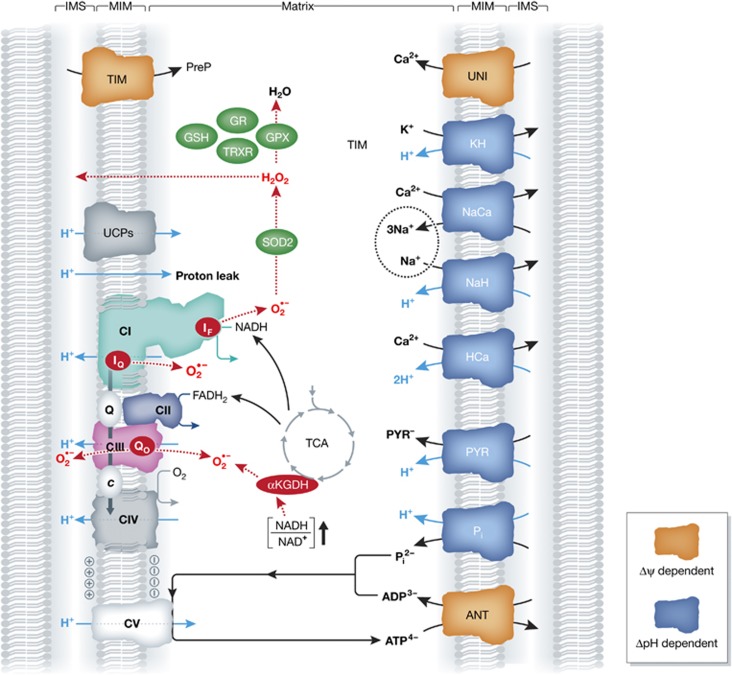Figure 3.

Integration of the OXPHOS system and mitochondrial metabolism. The five OXPHOS complexes, depicted on the lower left of the figure (see also Figure 2), maintain the inside-negative mitochondrial membrane potential (Δψ) and generate reactive oxygen species (ROS; red) in the form of superoxide (O2·−) and hydrogen peroxide (H2O2). ROS can also be generated by the TCA cycle enzyme α-ketoglutarate dehydrogenase (αKGDH), under conditions of elevated NADH/NAD+ ratio. ROS are removed by several antioxidant systems (green). In addition to fuelling ATP generation by CV, a sufficiently negative Δψ is also crucial for import of nDNA-encoded mitochondrial preproteins (PreP) via the TIM system. Moreover, metabolite and ion exchange across the mitochondrial inner membrane (MIM; right part of the figure) is driven by Δψ (orange) or its associated pH gradient (ΔpH; blue) (see text for details). ANT, adenine nucleotide translocase; GR, glutathione reductase; GPX, glutathione peroxidase; GSH, glutathione; HCa, proton/calcium transporter; IF, flavin site in CI; IQ, CoQ10-binding site in CI; KH, potassium/proton transporter; NaCa, sodium/calcium transporter; NaH, sodium/proton transporter; Pi, inorganic phosphate/proton transporter; PYR, pyruvate/proton transporter; Qo, CoQ10-binding site in CIII; SOD2, superoxide dismutase 2; TRXR, thioredoxin reductase; TIM, translocator of the inner membrane; UCP, uncoupling protein; UNI, mitochondrial calcium uniporter.
